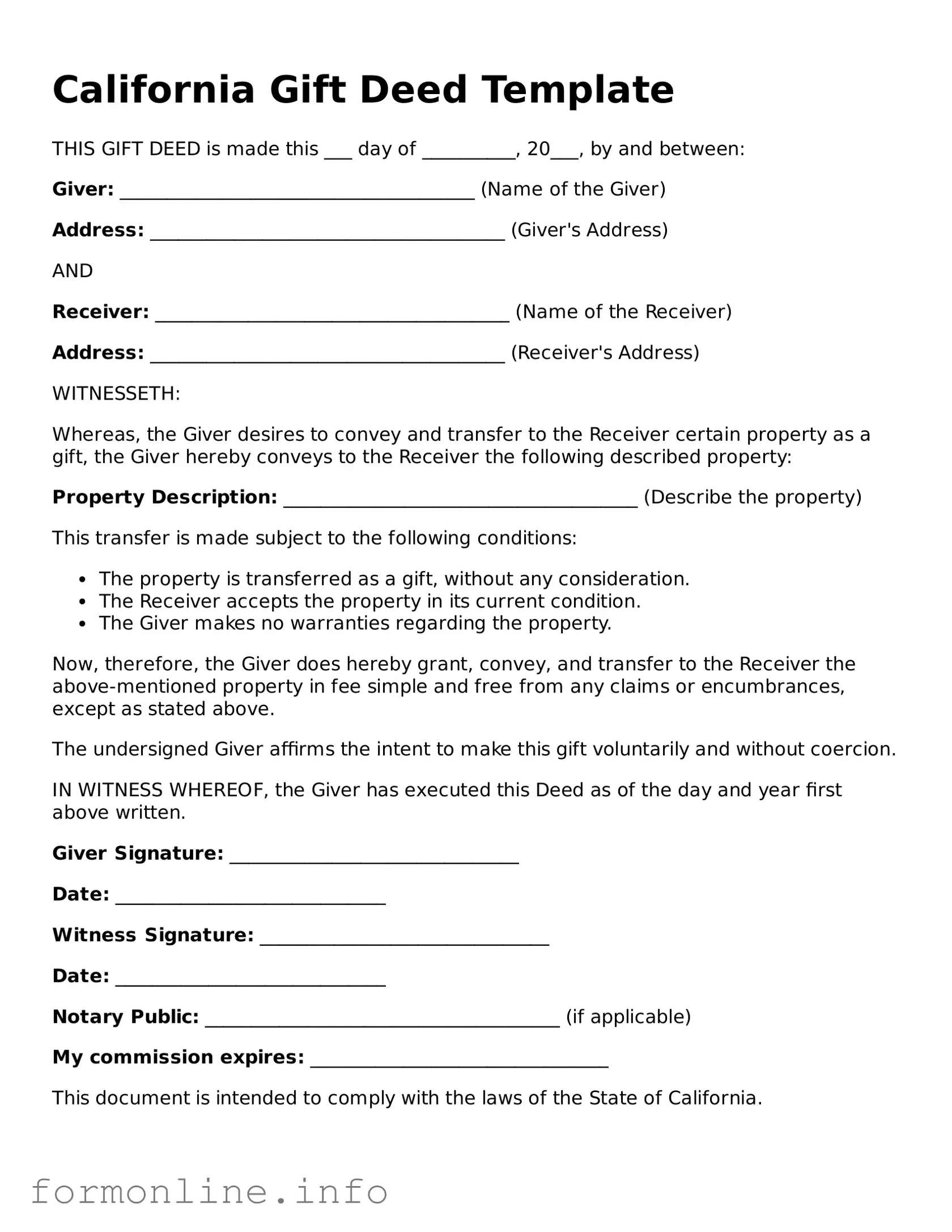California Gift Deed Template
THIS GIFT DEED is made this ___ day of __________, 20___, by and between:
Giver: ______________________________________ (Name of the Giver)
Address: ______________________________________ (Giver's Address)
AND
Receiver: ______________________________________ (Name of the Receiver)
Address: ______________________________________ (Receiver's Address)
WITNESSETH:
Whereas, the Giver desires to convey and transfer to the Receiver certain property as a gift, the Giver hereby conveys to the Receiver the following described property:
Property Description: ______________________________________ (Describe the property)
This transfer is made subject to the following conditions:
- The property is transferred as a gift, without any consideration.
- The Receiver accepts the property in its current condition.
- The Giver makes no warranties regarding the property.
Now, therefore, the Giver does hereby grant, convey, and transfer to the Receiver the above-mentioned property in fee simple and free from any claims or encumbrances, except as stated above.
The undersigned Giver affirms the intent to make this gift voluntarily and without coercion.
IN WITNESS WHEREOF, the Giver has executed this Deed as of the day and year first above written.
Giver Signature: _______________________________
Date: _____________________________
Witness Signature: _______________________________
Date: _____________________________
Notary Public: ______________________________________ (if applicable)
My commission expires: ________________________________
This document is intended to comply with the laws of the State of California.
